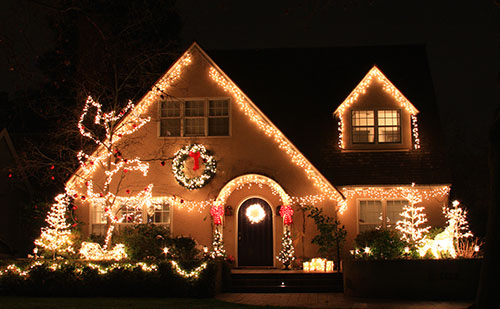Create Christmas Displays Like a Pro
Nov 29, 2021

With the close of Thanksgiving comes a new focus — Christmas! Beautiful lighted displays will soon adorn the homes and yards of Tennesseans eager to get into the holiday spirit. With each addition to your Christmas decorations, though, there must be some extra consideration into the details and layout of the display.
Whether this is your first time decorating the exterior of your home for the holidays, or you’re participating in a friendly competition to be the most festive house on the street, here are some basic steps to follow to get the job done efficiently and safely.
If you don’t have the tools you need to safely set up your Christmas décor, don’t take shortcuts and risk having a holiday fiasco. Simply stop by your local Co-op for supplies such as ladders, tape measures, and extension cords for hanging lights, cables and stakes for tying down yard displays, zip ties for securing greenery and ribbons, and more.
For more content like this, check out the latest issue of the Cooperator.
Whether this is your first time decorating the exterior of your home for the holidays, or you’re participating in a friendly competition to be the most festive house on the street, here are some basic steps to follow to get the job done efficiently and safely.
- Take a photo of your house
- Measure
- Determine what type of lights to use
- Test the lights on your décor
- Properly secure your décor
- Turn on and enjoy
If you don’t have the tools you need to safely set up your Christmas décor, don’t take shortcuts and risk having a holiday fiasco. Simply stop by your local Co-op for supplies such as ladders, tape measures, and extension cords for hanging lights, cables and stakes for tying down yard displays, zip ties for securing greenery and ribbons, and more.
For more content like this, check out the latest issue of the Cooperator.